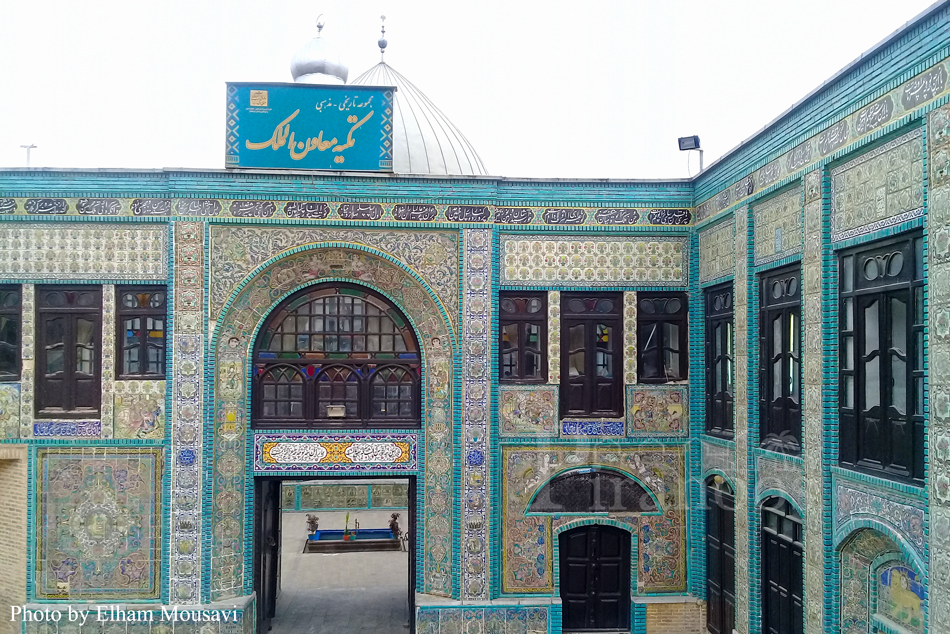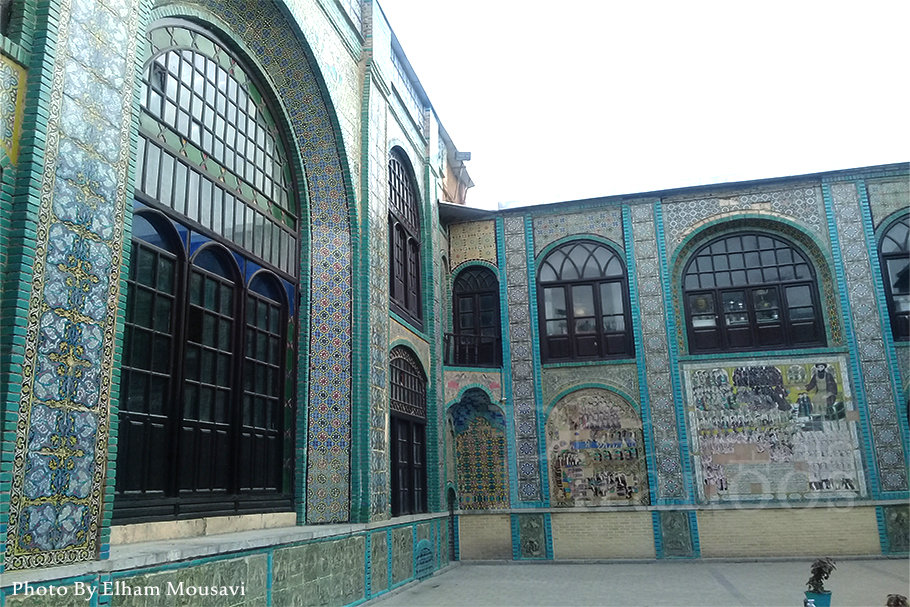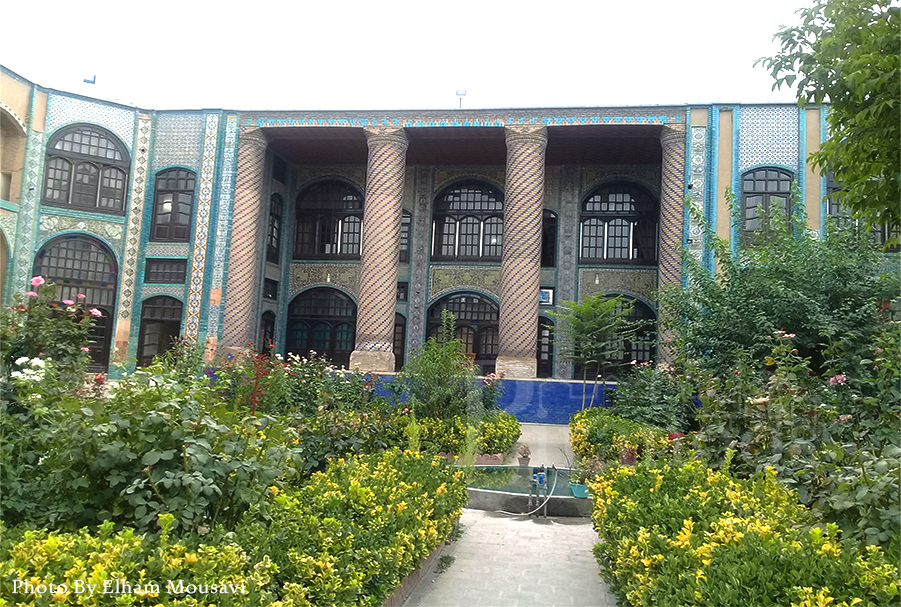One of the most beautiful and magnificent religious relics that remained from the Qajar period in Kermanshah is the Tekyeh Moaven Al-Molk. Located in the old texture of Kermanshah in the Abshuran neighborhood, this unprecedented display of tile and architecture was recognized as one of Iran’s National Heritage monuments on December 1, 1975.
Tekyeh Moaven Al-Molk of Kermanshah was originally built by Hossein Khan-e Moein Al-Raya and completed by Hassan Khan-e Moein Al-Molk during Qajar era. It came into operation in 1903 to hold the mourning ceremony of the martyrdom of Imam Hussain and to commemorate the event of Karbala. Tekyeh is a traditionally designed place, where Shiite Muslims, particularly in Iran, gather to honor the bravery of the 3rd Shia Imam and to mourn the months of Muharram and Safar regarding the Kerbala battle in 680 AD. The Tekyeh complex consists of three main sections of Husseiniyah, Zeinabiyah, and Abbasiyah.
The mansion is mostly repudiated for its exceptional, rare, and in some cases, unique tile work. It is undoubtedly an unparalleled work of linking tiles and architecture. The richness of the images and the variety of colors, types, and dimensions of tiles make the Tekyeh one of the most exquisite and spectacular monuments that remained from the Qajar era.
Most of these tile paintings present Kerbela events, religious narratives, Quran tales, and Iranian national and epic stories. The Tekyeh tiles are composed of two groups of embossed and seven-color tiles based on technique and performance. In addition to the tiles mounted on the walls, some tiles are in the storerooms, with poems by Kashmiri Kashani written in white on a blue background, complementing the missing tiles in Husseiniyah.


